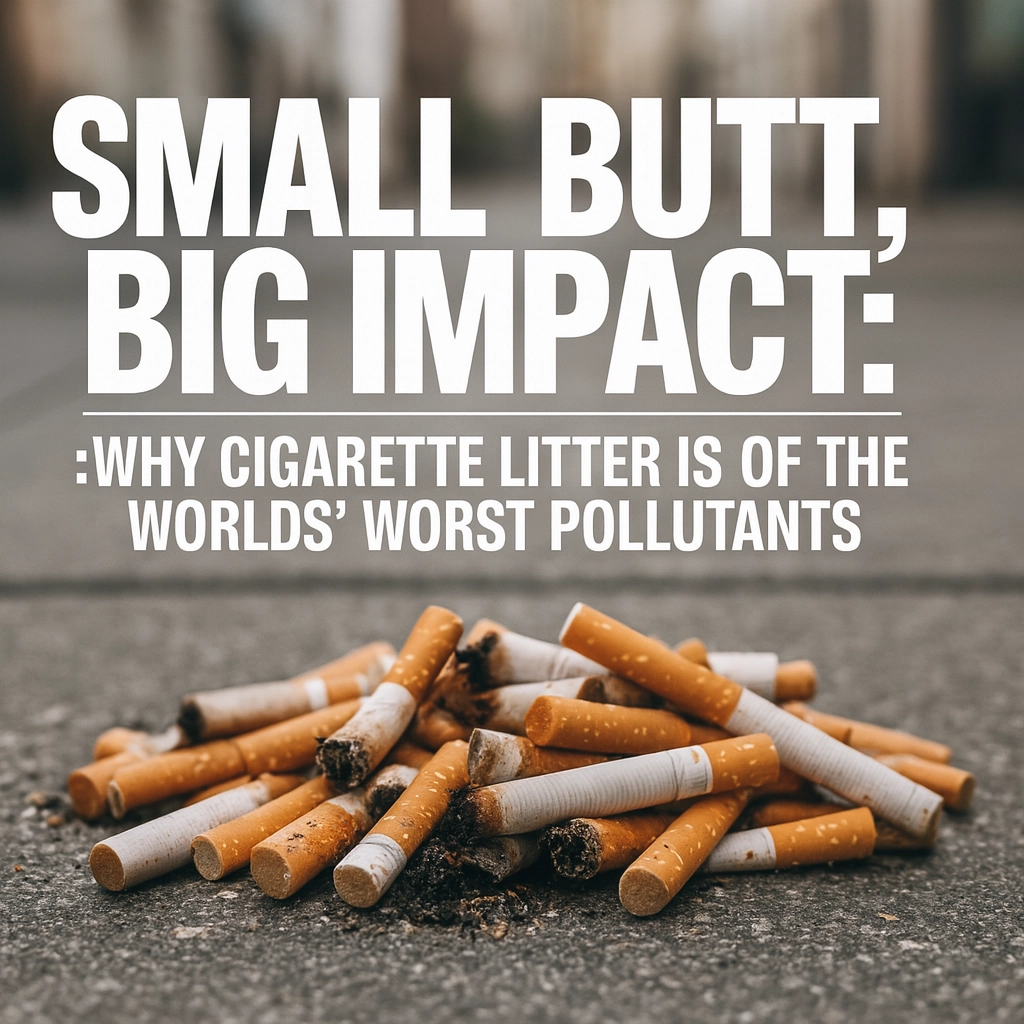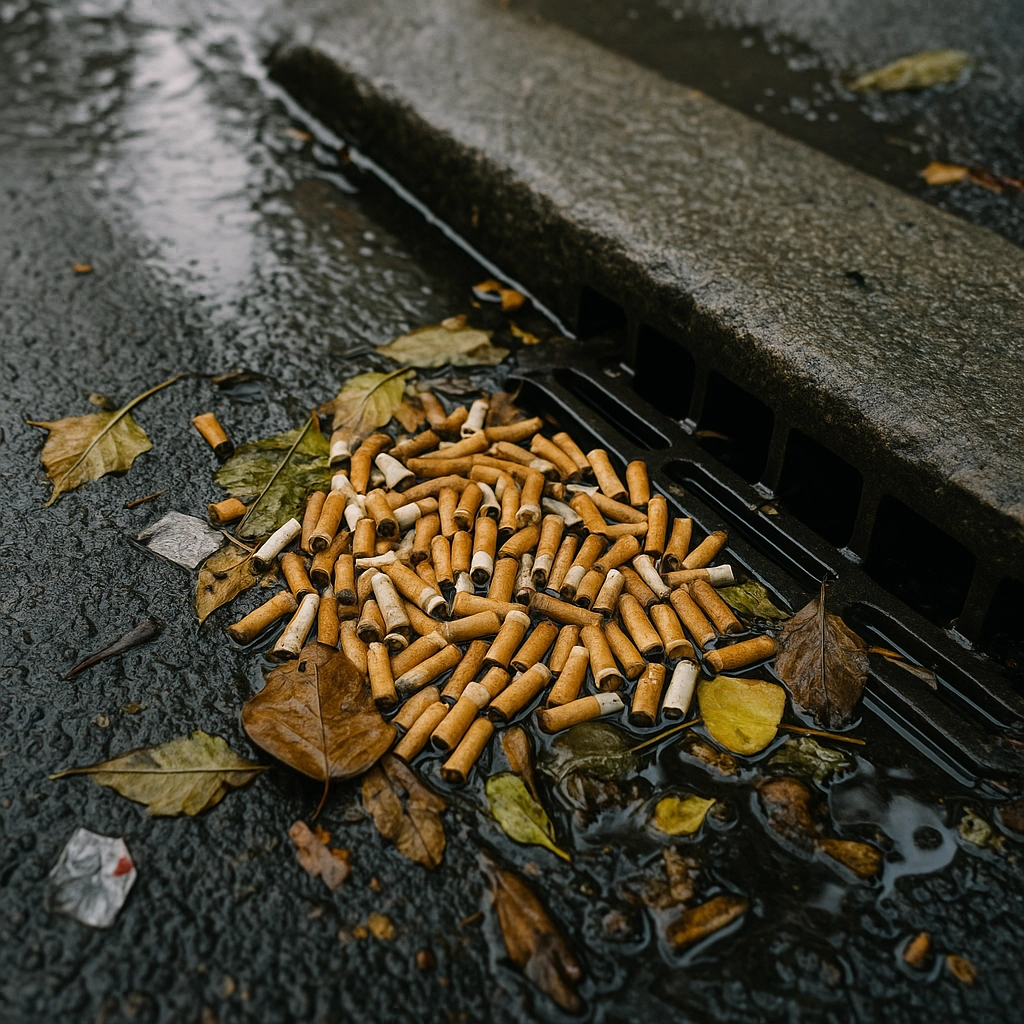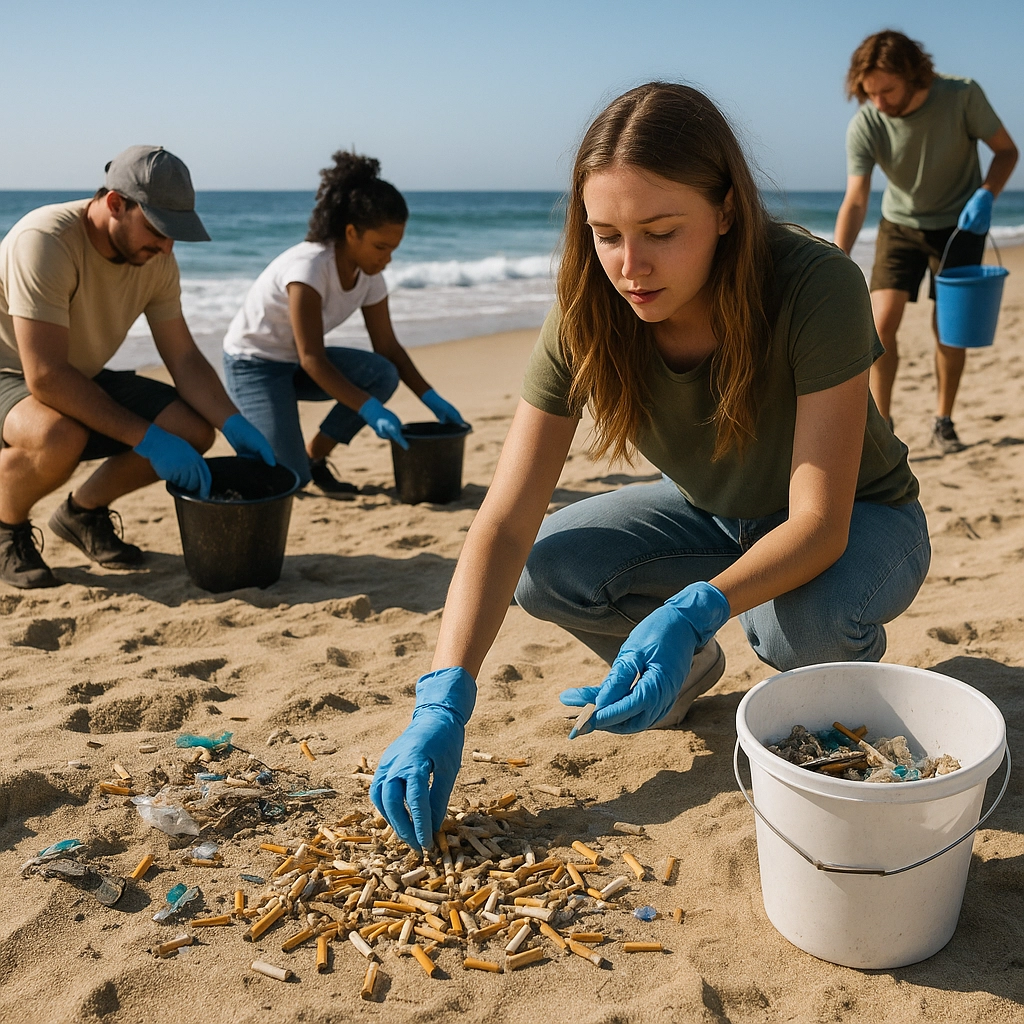
Cigarette butts might seem like a tiny problem—easy to flick away, out of sight, out of mind. But these small pieces of plastic and chemical waste add up to one of the world’s most severe pollution crises. Every year, an estimated 4.5 trillion cigarette butts are littered globally, quietly but steadily contaminating landscapes, rivers, and oceans. As the world battles visible plastic waste, this less-talked-about pollutant continues to fly under the radar, causing damage few realise until it’s too late.
A Tidal Wave of Tiny Trash
It’s almost hard to picture what 4.5 trillion butts look like. That’s more than 12 billion butts dumped onto the planet every day. In the United States alone, around 124 billion cigarette butts were tossed into the environment in 2022—a jaw-dropping 74 million pounds of cigarette litter from just one country, in just one year.
Globally and locally, cigarettes are the single most-littered item found on streets, beaches, and waterways. They make up nearly 38% of all trash collected in international cleanups. On California beaches, cigarette butts are the number-one polluter, and surveys show three out of four smokers admit to discarding cigarette ends onto the ground or out of car windows.
The butts often pile up around bus stops and outside buildings, but rain and wind quickly wash them into drains, rivers, and eventually the sea. 
What’s Really Inside a Cigarette Butt?
Don’t be fooled by the soft, cottony look of those leftover filters. Cigarette butts are made almost entirely from a special form of plastic: cellulose acetate. Each butt packs over 15,000 microplastic fibres, tightly woven but ready to unravel into tiny fragments once the butt hits the ground.
But that’s just the start.
The Environmental Fallout
Waterways Under Attack
The most immediate danger comes as cigarette butts get washed from city streets into drains and then into rivers, lakes, and oceans. As the filters break apart, they leach dozens of other chemicals into the water. Even at low concentrations, cigarette butt leachate is toxic to fish, crustaceans, and plankton, weakening entire food chains. Studies confirm that cigarette butts are regularly found in the bellies of dead seabirds, turtles, and fish. 
Land and Soil Suffering
It doesn’t end at the water’s edge. Filters are just as stubborn in soil, where toxins from butts can stunt plant growth, disrupt soil bacteria, and leave long-lasting contamination. The plastic in the filters never truly “breaks down”—it simply shatters into tinier and tinier microplastics, seeping deeper into the earth.
Danger to Wildlife and People
For wildlife, especially birds and small marine animals, cigarette butts are deceptive. Mistaken for food, butts can choke or poison the creatures who eat them. Young children who pick up and swallow discarded butts risk nicotine poisoning, a complication seen countless times in hospital emergency rooms. And as microplastics move up the food chain, human exposure is likely too, although the full health risks are yet to be fully understood.
Built to Last—For All the Wrong Reasons
One of the most disturbing aspects of cigarette butts is just how long they endure in the environment. A study in the Journal of Hazardous Materials found that in two years, standard cigarette butts had only decomposed by about 38%. In reality, the complete breakdown of the cellulose acetate filter—if it happens at all—can take more than a decade.
Rain, sun, and foot traffic don’t make much of a difference. The more butts that end up in the environment, the more microplastics and toxins are slowly released, compounding the damage year after year.
The Hidden Cost to Societies
Picking up cigarette butts isn’t just gross—it’s expensive. Each year, councils in the UK spend around £40 million cleaning up cigarette litter. These costs are inevitable when the alternative is letting butts pile up or wash into waterways.
The burden doesn’t just fall on taxpayers. Community groups, schools, conservation charities, and volunteers spend thousands of hours annually on litter-picking events, many of which are focused on this stubborn, tiny pollutant. 
The Unique Challenge of Cigarette Litter
While other types of waste—like plastic bottles or fast-food wrappers—can be big and visible, cigarette butts are “conveniently” small. This very fact makes them easy for smokers to discard without a second thought and hard for anyone else to spot, collect, or recycle.
They’re not just everywhere, but everywhere all the time. Cigarette butts are found on footpaths, in parks, outside schools, on mountain trails, on playgrounds, and floating in city fountains. Few places on earth have escaped their reach.
The result? A distributed, persistent network of plastic and chemicals affecting virtually all environments—from city centres to remote wilderness.
Searching for Solutions
There’s no silver bullet, but several strategies are helping to stem the tide:
- Enforcement and Education: Countries like Australia have imposed major fines for littering cigarette butts, and local authorities in Europe are rolling out new “bin your butt” campaigns.
- Deposit Schemes and Incentives: Some cities offer rewards for turning in used cigarette butts, with recycling start-ups turning them into plastic shipping pallets and even asphalt.
- Eco-Design: Researchers are developing biodegradable filters, though these still raise concerns about leaching toxins before they disappear.
- Corporate Responsibility: Campaigners are calling on the tobacco industry to either design less harmful products or fund large-scale cleanup programmes.
- Community Action: Beach cleanups, educational talks in schools, and media campaigns help build awareness and show the scale of the problem. At Team Britannia PR, we see education and community engagement as critical parts of the fight against single use plastics, and ultimately the replacement of plastic butt with biodegradable alternatives. This is why we back the campaign to amend the Tobacco and Vapes Bill to set an industry framework for the replacement of plastic cigarette butts, while also supporting the work of other campaigns to make smokers bin their butts.
Conclusion: The Power of Small Actions
When added together, countless small actions can lead to a planetary-scale crisis—or a large-scale solution. Every discarded cigarette butt is a potential pollutant, but every properly disposed filter is one less threat to the environment. By highlighting how significant this “small” litter problem truly is, we can all play a part in reversing the tide.
For more information on how you or your organisation can get involved, reach out via our contact page. Let’s keep our landscapes—and our oceans—butt-free for future generations.
